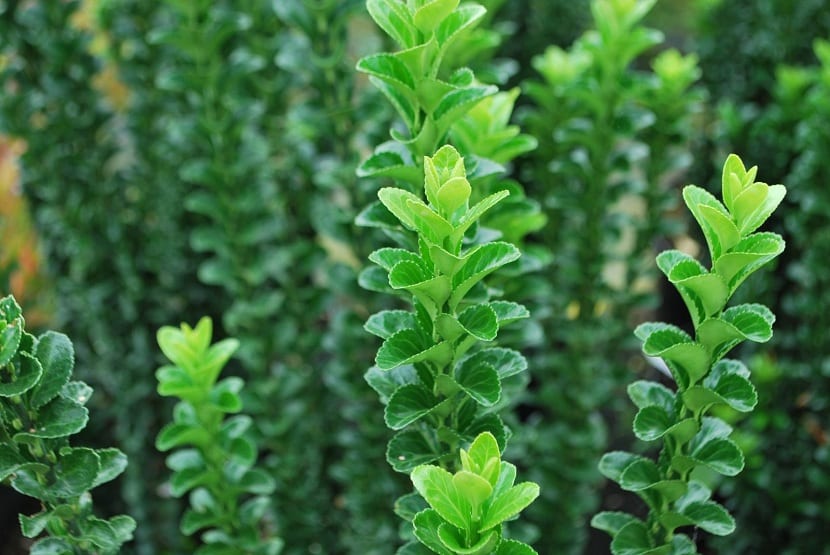
Today we are going to talk about a genus that encompasses 175 species of trees, shrubs and vines widely used in decoration both in parks and gardens. It's about the genre euonymus. Plants belonging to this genus can be both deciduous and perennial. They belong to the Celastraceae family. Most of them have simple leaves and sometimes we can see them with serrated leaves. Although the flowers are not very attractive, the leaves already do their job.
In this article we are going to detail the characteristics and general care of Euonymus plants and we will review the characteristics of the main species of this genus.
Key features
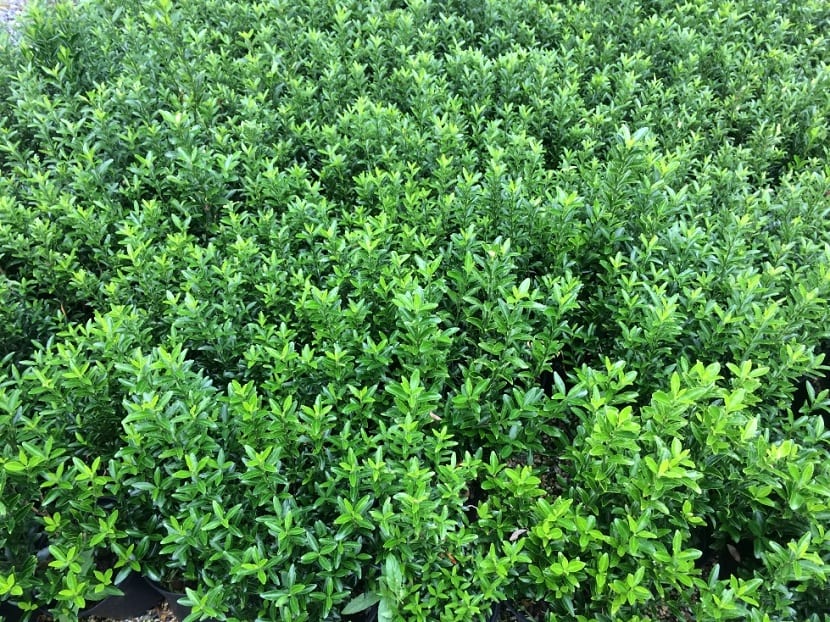
The flowers of plants of the genus Euonymus are not usually too showy. They have a greenish or yellowish color and have 4 petals. When the flowers are fully developed, they produce very small fruits of different colors and sometimes poisonous. The positive is that these fruits tend to have a somewhat oily coating to give off a smell that attracts birds. This will help us to have some fauna in your garden and, in addition, they will help spread the seeds of both these plants and others.
It is widely used as an ornamental plant in parks and gardens. Native to the northern hemisphere, from the part of Asia to the Himalayas, It has conquered many gardens around the world for its ornamental power.
Euonymus care
We are going to detail a little better the care and maintenance that it requires to be able to delve a little more. Remember that these indications are general, since each species then has its own more detailed care. However, these instructions will come in handy to know what you should do in general.
The first thing is to find the ideal location so that the plants of the genus Euonymus can develop well. They need places in both full sun and shade. This does depend entirely on each species. There will be some that can tolerate direct sun and others that cannot. In general, semi-shade can be a good idea. Those plants that are deciduous will need more sun and will be able to look much better in the fall season.
As for the soil, they have no problem adapting to any type of soil. It is capable of growing in almost any soil, even calcareous ones. It is preferable that they are fertile and humid so that they can develop better. Something that is essential is that the soil has good drainage. This is necessary if we do not want irrigation water to accumulate and rot roots or weaken the plant. It does not tolerate puddles, so we have to guarantee good drainage.
Although these plants are generally frost resistant, they are quite grateful to be sheltered. Better, find the area of your garden where the wind does not blow so much so that the thermal sensation is not so low when it is colder.
Cultivation and maintenance
They are easy plants to grow. Almost all the plants of this genus are shrubs that have great ornamental value and that is why they are so widely cultivated in many parts of the world. Some of the deciduous species are planted for fall display or for the fruits that are quite showy when opened. Those that are evergreen are also very interesting. Most of them create fairly quickly and can be put to quite a few uses in gardening. The first thing is that they can be planted both as isolated specimens and in a group. Clusters are good enough to form hedges and borders or to serve as screens. When we are in the hottest season and lack of rain we must not neglect irrigation.
As for maintenance, it allows you to do severe pruning as long as you need to remodel its entire appearance. Your transplant can be done without any problem from one side to the other. To reproduce this plant, we can do it through the seeds or by cuttings. The cuttings method is more recommended since the growth time is faster than that of seed.
One of the problems that this plant can present is a certain weakness for a type of pest. It is the cochineal of the eponymous. This plague is one of the most important that attacks them. They spread on the underside of the leaves and can completely weaken or kill it.
Main species
We are going to comment briefly on which are the main plants of the genus Euonymus.
euonymus alatus
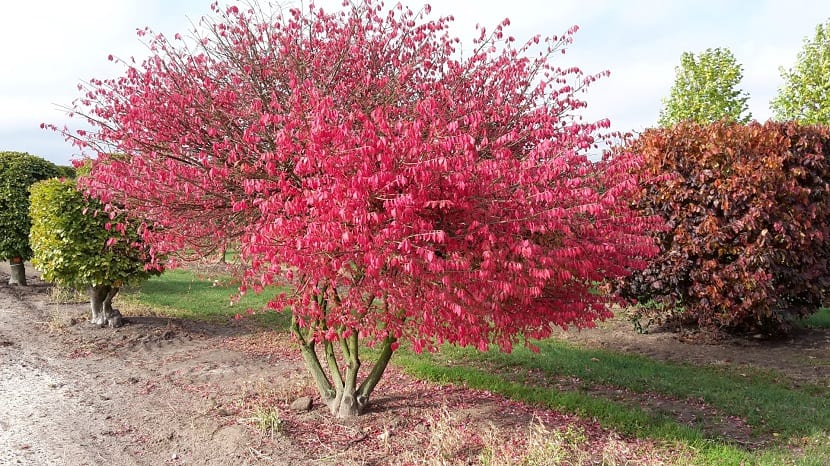
El euonymus alatus It is a deciduous shrub with dark foliage. This shrub is usually planted so that, in autumn, it has incredibly pretty foliage with a deep red color and purple fruits. It can measure up to 5 meters high and one meter wide. The flowers are greenish yellow.
Euonymus europaeus
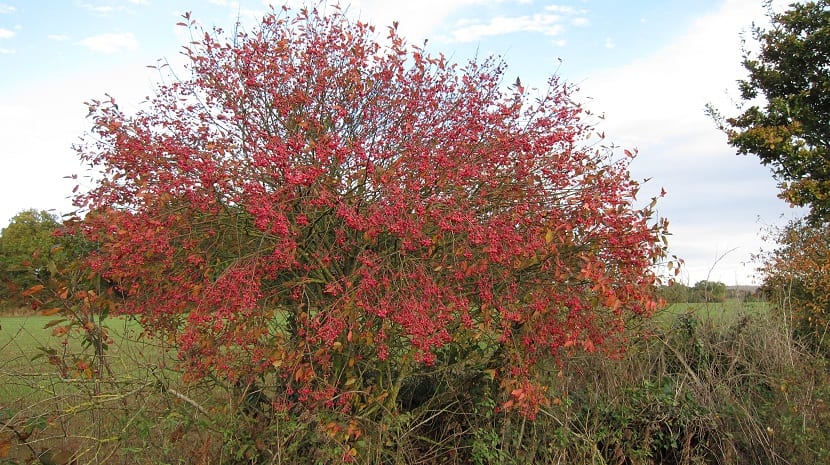
It is a deciduous shrub that grows up to 1,8 meters tall. The leaves have a nice reddish yellow color in the fall season. They also have very showy red fruits with orange seeds.
Euonymus fortunei
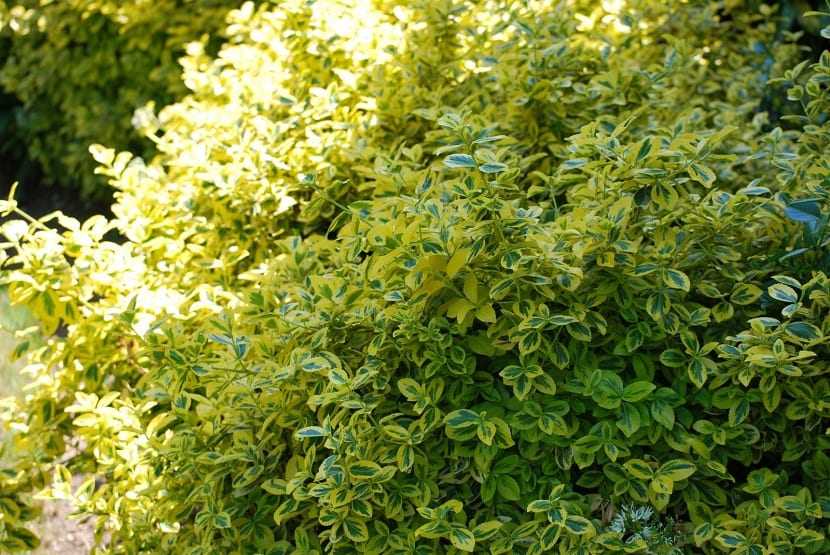
This species is an evergreen vine. It can serve as a ground cover or climber as long as you guide it on any structure or surface. The flowers are not very showy but it is a fast growing plant.
Euonymus japonicus
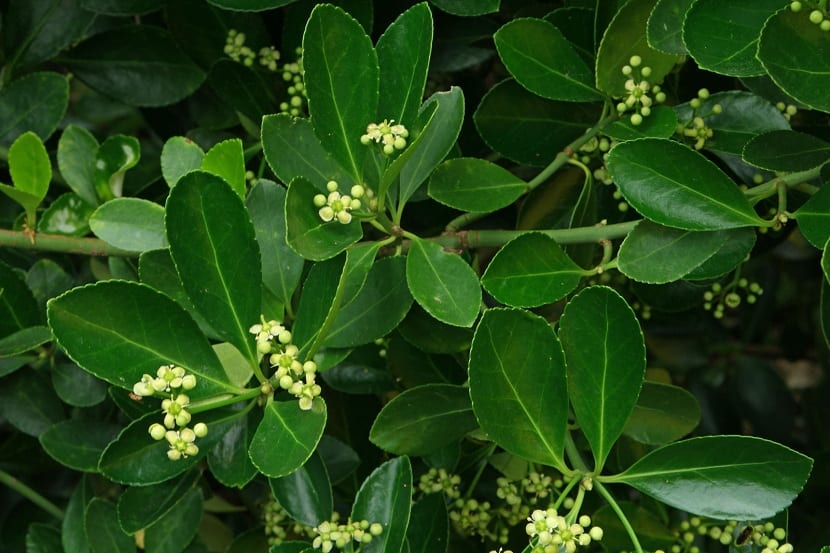
El Euonymus japonicus it is an evergreen shrub. It needs exposure to the sun and usually reaches between 3 and 4 meters in height. It resists heat well, but not cold.
Euonymus pulchellus

This variety is more characteristic for the size of its leaves. They are quite small leaves. Of general size, it is also usually smaller, reaching only one and a half meters in height. It is best used to make small hedges.
I hope that with this information you can get to know more about the genus Euonymus and the main species that most represent it.